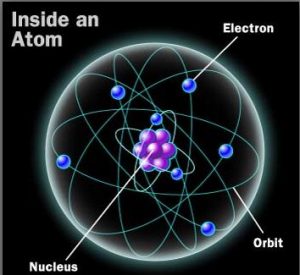It would be surprising for many Indians today to know that the concept of atom (Anu, Paramanu) was explicitly stated by an Indian philosopher nearly 600 years before the birth of Christ. These ideas, which were very fundamental, had been developed in India in a very abstract manner.
The Five Basic Physical Elements
From the Vedic times, around 3000 B.C. to 1000 B.C., Indians(Indo – Aryans) had classified the material world into four Elements viz. earth (Prithvi), fire (Agni), air (Vayu) and water (Apah). To these four Elements was added a fifth one, viz. ether (Akasha). According to some scholars these five elements or Pancha Mahabhutas were identified with the various human senses of perception.
Paramanu
Since ancient times, the last miniscule particle of matter, which could not be subdivided, was termed Paramanu by Indian philosophers. The term Paramanu is suggestive that, at least at an abstract level, Indian philosophers had conceived the possibility of splitting an atom which we know today, as the source of atomic energy. The first Indian philosopher who formulated ideas about the atom, in a systematic manner, was Kanada who lived in the 6th century B.C. Pakudha Katyayana who was a contemporary of Gautama Buddha, had also propounded ideas about the atomic constitution of the material world. These philosophers considered the atom to be indestructible and hence eternal. Indian theories about the atom are greatly abstract and enmeshed in philosophy as they were based on logic and not on personal experience or experimentation. Although the Indian theories lacked an empirical base, they were brilliant intuitive explanations of the physical structure of the world — and in a large measure, agreed with the discoveries of modern physics.
* In the Vedas, the weak nuclear forces that bind the sub-atomic particles are called Prana .
To be continued….









